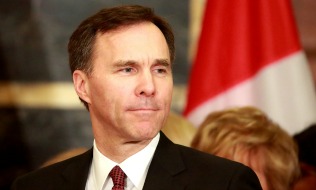
New draft regulations from the federal government would allow registered pension plans to borrow money and extend the deadline to retroactively credit pensionable service under a defined benefit plan in a bid to help plan sponsors maintain their pensions through the coronavirus pandemic.
As part of the government’s coronavirus economic response plan, the regulations would apply to employers sponsoring a registered pension plan or a salary deferral leave plan, aiming to provide temporary relief from registration rules and conditions under the Income Tax Regulations. The draft regulations would also extend the deadline to make catch-up contributions to defined contribution plans and permit plan sponsors to make catch-up contributions in 2021 if they were reduced in 2020.
Read: An overview of Canadian DB pension relief measures during coronavirus
The regulations would also set aside the 36-month employment condition in the definition of eligible period of reduced pay for the purpose of using prescribed compensation to determine benefit or contribution levels. And they’d allow wage rollback periods during 2020 to qualify as an eligible period of reduced pay for prescribed compensation purposes.
Under the draft regulations, plan sponsors would also be allowed to add temporary stop-the-clock rules to the conditions applicable to salary deferral leave plans between March 15 and April 30.
“COVID-19 has proven that extraordinary challenges demand extraordinary actions,” said Minister of Finance Bill Morneau, in a press release. “The temporary relief we will provide to registered pension plan sponsors and their beneficiaries will play an important role in supporting them through these challenges and in positioning them for a strong recovery.”
Read: Canada pausing solvency payments for federally regulated DB pension plans
In other pension news, the Association of Canadian Pension Management is calling on the Ontario government to address the unintended consequences of the province’s recently amended employment standards legislation for pension plan sponsors.
The government amended the Employment Standards Act to make temporary layoffs that occurred after March 1, 2020, part of new emergency leave provisions put in place in the wake of the coronavirus pandemic, though these changes only apply to non-unionized workers.
The amendments also allow employees to continue to participate in their pension and certain other benefits plans during their leaves of absence, requiring employers to make contributions as well, unless laid-off employees opt out.
“Since each pension plan may treat various leaves of absence and layoffs differently, there may be implications under the plan terms as a result of retroactively re-characterizing an absence from work,” wrote Ric Marrero, the ACPM’s chief executive officer and Danelle Parkinson, the association’s Ontario regional council chair, in the letter to Ontario Labour Minister Monte McNaughton. “For many pension plans, benefit accrual in respect of a layoff may not be permitted at all. If benefit accrual in respect of a layoff is permitted, employee contributions may or may not be accompanied by employer contributions.”
Read: Ontario amending employment standards to make temporary layoffs part of new emergency leave
As well, some pension plans allow employees to buy back service in various absences, including ESA-protected leave, layoffs and strike-related absences. “The pricing of those buybacks under the plan terms may differ significantly between emergency leave and layoff.”
The interaction between the ESA changes and pension plan terms could force employers and their employees now considered to be on emergency leave to contribute to the plan, even if the employee hadn’t been contributing before May 29, when the changes went into effect, the ACPM said. They might also move some employees from one service pricing category to another, which could be more or less favourable to them and potentially detrimental to the plan sponsor.
It could also create disparities between non-unionized employees who are covered by the ESA amendments and unionized employees who are governed by their collective agreements. “Changes that create new distinctions between unionized and non-unionized employees may disrupt potentially delicate balances achieved in collective bargaining,” wrote Marrero and Parkinson. “Presumably, this was not the government’s intention.”
Read: 41% of Canadian businesses have laid off staff due to coronavirus: Stats Can
In its letter, the ACPM proposed amending the ESA’s leave regulation to explicitly state that no employee on emergency leave should be required to contribute to a pension plan during the pandemic period if they weren’t contributing on May 29, notwithstanding the terms of any pension plan.
The letter also noted that the amendments create differential treatment between employees based on whether or not they were contributing to a pension plan on that date. It also put some pension plan sponsors that decided to continue their pension contributions during a temporary layoff on the hook for additional contribution costs for which they may not have budgeted.
“But for the [new] leave regulation, the employer would have had other options under the ESA to switch to alternative benefits over the course of an extended layoff (such as ‘substantial payments’ to employees or supplementary unemployment benefits). That flexibility is now removed,” said the letter. “Because the leave regulation was brought into effect without prior notice and with immediate effect on May 29, 2020, employers were not able to make an informed choice as to the benefits they were agreeing to provide.”
The ACPM suggested exempting employers that made contributions during the pandemic from the obligation to continue those contributions, while still allowing them to do so if they wish, on par with employers that weren’t contributing prior to May 29. “In this way, . . . every Ontario employer has the same ‘fresh start’ and can choose to make employer contributions or not with the same information.”
Read: Feds extending time period for temporary layoffs during pandemic
